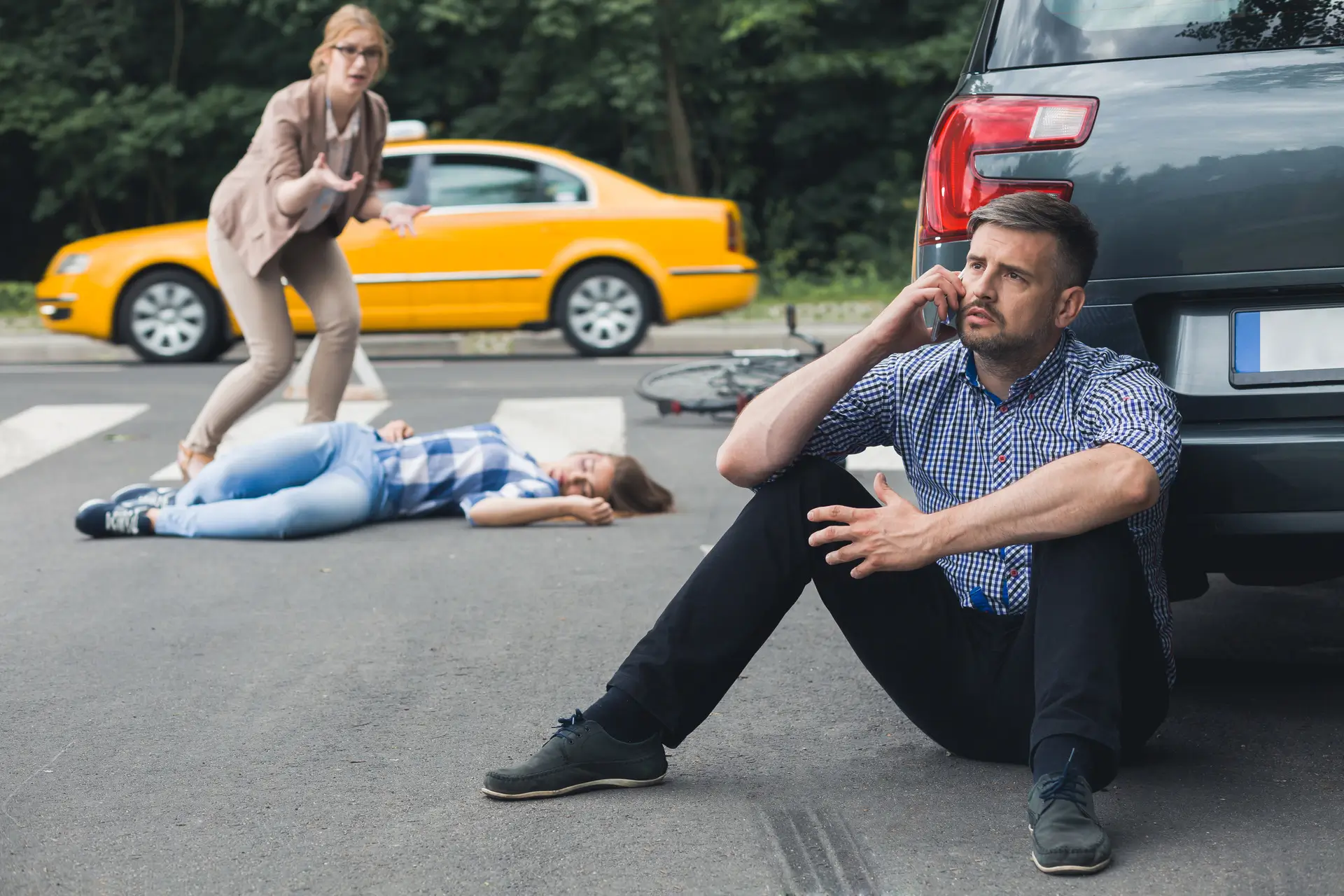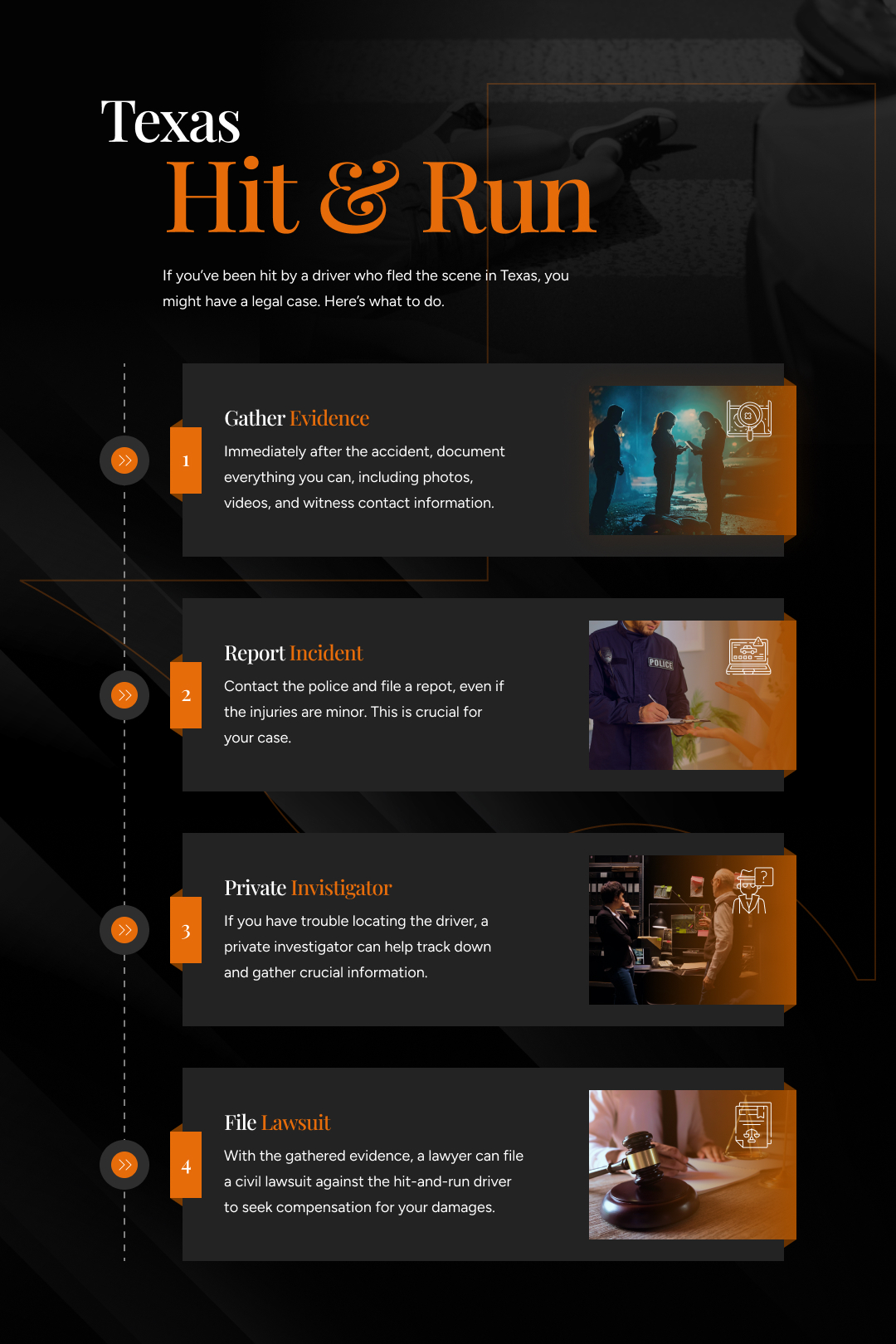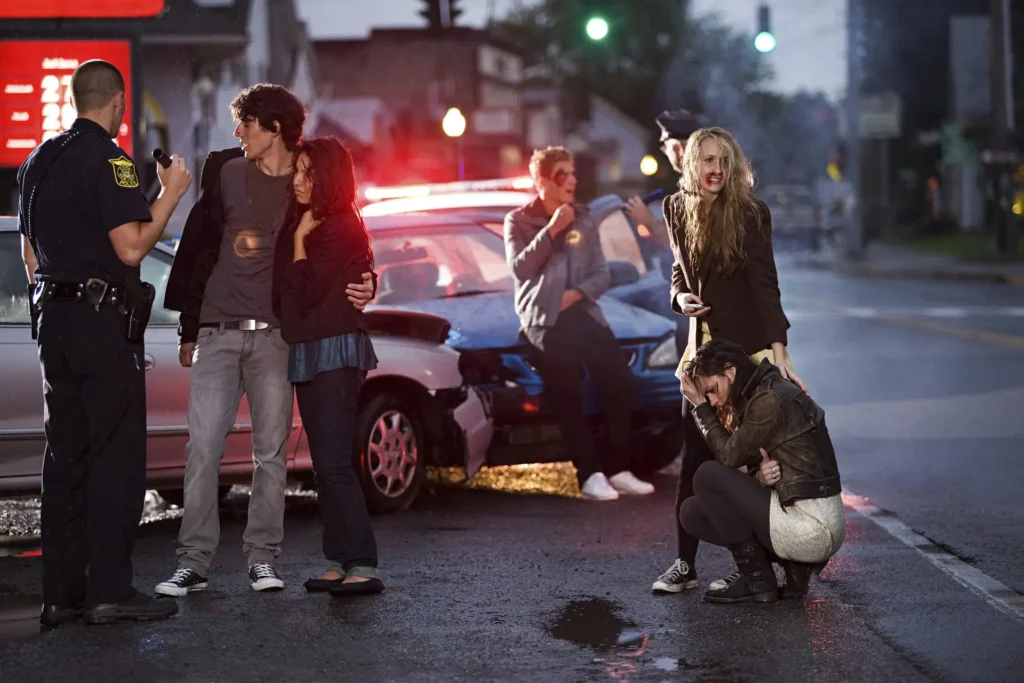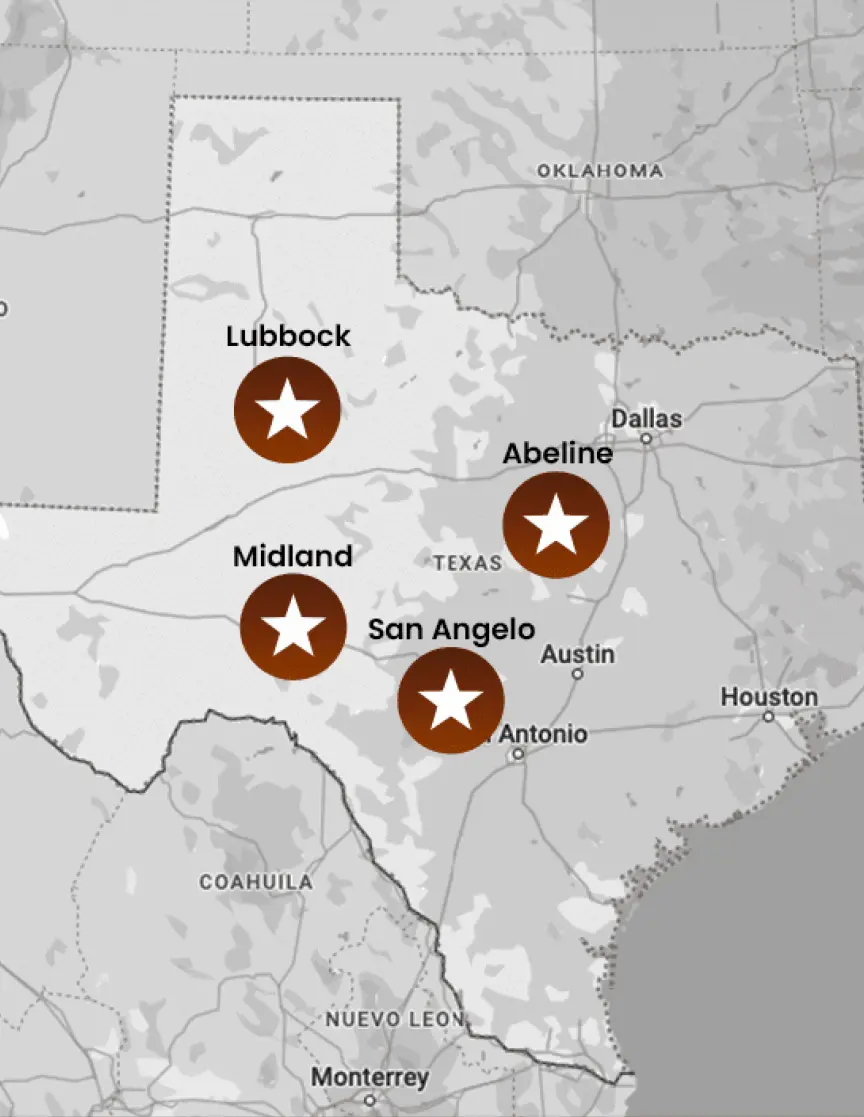
Yes, you can sue someone for a hit-and-run in Texas. When involved in a hit-and-run accident, victims have legal recourse to seek compensation for damages and injuries sustained.
This remedy helps ensure that negligent drivers are held accountable for their actions, even if they flee the scene of an accident.
You can add to this by gathering evidence, such as witness statements and police reports, to strengthen your case, pursue justice, and secure financial recovery for your losses.
The process of suing for a hit-and-run is made significantly easier with the help of our knowledgeable attorneys.
If you are considering this path, contact our office now at 325-225-0953 for expert legal guidance and support. Let us help you pursue the justice and compensation you deserve.
What is classed as a “hit-and-run” accident in Texas?
Under Texas Transportation Code § 550.021, any driver involved in an accident that results in injury or death is legally required to stop immediately at the scene (or as close as possible) to provide necessary assistance and exchange information. This statute highlights the legal obligation to contact law enforcement if injuries or fatalities occur.
Failing to fulfill these responsibilities constitutes a hit-and-run, which carries serious legal consequences under Texas law.
Under Texas law, a hit-and-run accident is defined as any situation where a driver involved in a collision fails to stop and provide their information or offer assistance to the other party. This includes accidents where a driver strikes another vehicle, a pedestrian, or property and then leaves the scene without fulfilling their legal obligations.
Additionally, if a person is injured or killed in the car accident, the driver must also contact law enforcement. Failure to adhere to these legal obligations can result in serious penalties, including fines and potential criminal charges.
Real Life Example of a Hit-and-Run in Texas
In a recent incident reported on September 30, 2024, a tragic hit-and-run occurred in Dallas involving a man in a wheelchair who was struck and killed. The driver fled the scene, prompting local law enforcement to seek public assistance in identifying the responsible individual. This case underscores the devastating impact of such accidents on vulnerable members of the community. Read more about the incident here.
According to the National Highway Traffic Safety Administration (NHTSA), Texas recorded 2,932 hit-and-run fatalities nationwide in 2022, with a significant proportion of these incidents occurring in urban areas like Dallas and Houston. This alarming statistic highlights the persistent danger of hit-and-run accidents and the urgent need for stricter enforcement and public awareness.
How to sue for a hit-and-run in Texas
Several critical steps should be taken to ensure that victims pursue justice effectively:
- Gathering evidence: This may involve taking photographs of the car accident scene, documenting vehicle damage, and obtaining contact information from witnesses.
- Reporting the incident: Notifying the police is imperative as it documents the occurrence and initiates an investigation to identify the at-fault driver. Law enforcement plays a key role in this process by gathering statements, conducting interviews, and potentially reviewing nearby surveillance footage.
- Private investigators: In cases where the driver remains unidentified, enlisting the help of private investigators can be beneficial. These professionals possess the tools and expertise needed to track down fleeing individuals.
- Filing a civil lawsuit: This process may require presenting the collected evidence, police reports, and additional witness testimonies.

Although pursuing compensation can be challenging due to the anonymity of hit-and-run drivers, proper legal guidance can significantly enhance your chances of a successful claim. Each step taken afterward helps strengthen the case and advocate for accountability.
Additional reading: How many days do you have to file a police report after an accident
Contact an Abilene car accident lawyer from our law office today for further guidance and a free consultation
Steps to take after a hit-and-run
After experiencing a hit-and-run accident, it is vital to remain calm and follow certain steps to ensure your safety and strengthen your case:
Ensure Safety First:
Move your vehicle to a safe location to prevent further accidents and check for any injuries. Call 911 if medical assistance is needed and provide details about your condition and the scene.Call the Police:
Report the incident to the police immediately, even if they were not present at the scene. Provide as many details as possible about the fleeing vehicle, including its make, model, color, and license plate number, if you noted it.Document the Scene:
Look for skid marks, vehicle debris, or any physical evidence that may help identify the fleeing driver. Take clear photos of the scene, including your vehicle’s damage, any injuries, and the surrounding area. If possible, record witness statements or obtain their contact details.Consider Legal Advice:
Consult a personal injury attorney to understand your rights and explore your legal options for pursuing compensation. An attorney can guide you through the claims process and handle negotiations with insurance companies or potential lawsuits.Notify Your Insurance Company:
Inform your insurer about the hit-and-run as soon as possible. Be sure to provide photos of the scene, contact information for witnesses, and a copy of the police report to expedite claim processing.Seek Medical Attention:
Even if injuries aren’t immediately apparent, visit a healthcare provider to ensure there are no underlying injuries. Keep detailed records of any treatments, diagnoses, or prescribed medications, as these will be important for your claim.Follow Up with Law Enforcement:
Obtain a copy of the police report and maintain contact with law enforcement for updates on their investigation. Provide any additional evidence that may come to light after the initial report.Practice Self-Care:
Address any emotional impacts of the incident by seeking support from friends, family, or professional counselors. Emotional recovery is as important as physical recovery after a traumatic event.
Additional reading: pedestrian hit by car: what to do
What if you can't identify the driver immediately?
Identifying the driver responsible for a hit-and-run accident can be one of the most challenging aspects of the aftermath. However, several methods can be employed to increase the likelihood of locating the individual. Utilizing a range of resources and strategies can help victims gather valuable information that may lead to the identification of the fleeing driver.
If the at-fault driver is not found, you may still have options for seeking compensation. Your uninsured motorist coverage can cover medical expenses, lost wages, and even vehicle repairs. This type of coverage is specifically designed to protect you in situations where the responsible party is unidentified or lacks sufficient insurance.
Review your policy with your attorney to explore all available benefits. In addition to uninsured motorist coverage, you may be eligible to claim under Personal Injury Protection (PIP) or Medical Payments Coverage, which can help reimburse medical expenses and other related costs regardless of fault.
Identifying a hit-and-run driver
Below are some effective methods to pursue in this effort:
- Eyewitness Accounts: Gathering statements from individuals who witnessed the accident can provide details such as the make, model, or color of the vehicle involved.
- Traffic Cameras: Reviewing footage from traffic surveillance cameras can yield important insights into the incident, potentially capturing the vehicle’s license plate or the driver’s appearance.
- Local Businesses: Nearby establishments may have security cameras that recorded the accident or the fleeing vehicle.
- Police Investigation: Law enforcement agencies often have access to resources and databases that can aid in identifying the driver. Reporting the incident promptly can help expedite this process.
- Social Media and Community Outreach: Posting information about the incident on social media platforms or local community sites may prompt individuals who have seen the vehicle to come forward with information. But just be careful about what you post since the insurance company could use anything you say against you.
Additional reading: average payout for a pedestrian hit by a car in Texas
Getting compensation if you can't identify the driver
- Uninsured Motorist Coverage: If you have uninsured motorist coverage as part of your auto insurance policy, this may cover your damages. This type of insurance is designed to protect you in cases of accidents with drivers who do not have insurance or flee the scene.
- Personal Injury Protection (PIP): If your policy includes PIP coverage, you may be eligible for reimbursement of medical expenses and other costs related to the accident, regardless of who was at fault.
- Medical Payments Coverage: This provision in some insurance policies covers medical expenses for you and your passengers, providing financial support for hospital visits and treatment resulting from the accident.
- Filing a Claim with Your Insurance: Even if the driver cannot be identified, filing a claim with your insurance company might yield compensation for your losses. Be sure to provide all evidence and documentation to support your claim.
- Legal Action Against Your Own Insurer: If you are denied a claim or dispute arises, you may need to consider legal action against your insurance provider to ensure you receive the benefits owed to you under your policy.
- Seeking Assistance from an Attorney: Consulting with a personal injury attorney from our firm can provide you with valuable guidance on seeking compensation when the responsible party is unidentified. We can help assess your situation and explore available legal avenues.
Schedule a Free Consultation TodayKeith & Lorfing have a Midland car accident lawyer on hand to further guide you in your motor vehicle accident. Call today!
Your rights as a victim
You have the right to pursue legal action against the responsible party in civil court. Even if the driver who fled the scene is identified, you can sue them for damages:
- Medical Expenses: Compensation for medical bills, including ongoing treatment and rehabilitation costs.
- Lost Wages: Reimbursement for income lost due to the inability to work as a result of your injuries.
- Pain and Suffering: Financial compensation for the physical and emotional distress caused by the accident.
In car accident cases where the hit-and-run driver is not found or does not have insurance, your own uninsured motorist coverage can be a lifeline. In Texas, this coverage is designed to protect you when the at-fault party cannot be identified or is uninsured. Here’s what you should know:
- How It Works: Uninsured motorist coverage can help pay for your medical bills, vehicle repairs, and other related expenses.
- Understanding Your Policy: It’s vital to regularly check and understand your insurance coverage. Knowing what your policy includes can save you from unexpected financial burdens after an accident.
Legal responsibilities following a hit-and-run
As per Chapter 550 of the Texas Transportation Code, operators involved in any collision that results in personal injury or death are obligated to stop their vehicle at the scene or as close as possible, assess for injuries, and render assistance as needed.
Additionally, for collisions resulting solely in property damage, the responsible driver must also stop, provide contact information, and remain at the scene until legal duties are fulfilled, which could involve filing a collision report with local authorities.
Even if the driver responsible for the accident isn’t immediately located, it does not mean they will never face consequences for their actions. By taking the necessary steps and seeking support from legal professionals, victims can work towards securing the compensation they deserve while holding hit-and-run drivers accountable for their actions.
Criminal and civil ramifications for the at-fault party
- Failure to Stop: A basic charge that applies in any collision where the driver does not stop to provide information or assistance. Depending on the state, this charge can range from a misdemeanor to a felony.
- Reckless Driving: If the driver exhibited dangerous behavior leading to the accident, they may face charges of reckless driving, which is typically classified as a misdemeanor but can escalate to a third-degree felony under aggravated circumstances or even a second-degree felony if the result is serious injury or death.
- Causing Injury or Death: In instances where the hit-and-run results in personal injury or fatality, the driver could be charged with more severe felonies. This can lead to significant prison time and hefty fines, depending on the jurisdiction and specifics of the case.
Schedule a Free Consultation TodayContact a San Angelo car accident lawyer to get compensation for your physical injuries if the other party involved in the accident failed to stop.

Texas minimum liability insurance requirements
In Texas, drivers must carry liability insurance with the following minimum coverage amounts:
Bodily Injury Liability:
- $30,000 per person injured in an accident
- $60,000 total per accident for all injuries
Property Damage Liability: $25,000 per accident
These minimum amounts are commonly referred to as 30/60/25 coverage. This liability insurance is intended to cover the costs of injuries and property damage that you may cause to others in an accident where you are at fault.
Additional Reading : how much can someone sue for a car accident
Optional Coverages
While the above coverage is mandatory, Texas law also allows drivers to purchase additional types of insurance, which, although optional, can provide greater protection:
- Uninsured/Underinsured Motorist Coverage: Protects you if you are in an accident with a driver who either doesn’t have insurance or has insufficient coverage.
- Personal Injury Protection (PIP): Covers medical expenses, lost wages, and other expenses regardless of who is at fault.
- Comprehensive and Collision Coverage: Covers damage to your vehicle from accidents, theft, vandalism, and other incidents.
Statistics on Hit-and-Run Accidents in Texas
According to a study published by the AAA Foundation for Traffic Safety, Texas is among the highest-ranking states for hit-and-run fatalities, with 233 recorded cases in 2016 alone. This is second only to California, which recorded 337 incidents that same year.
A more recent report by the National Highway Traffic Safety Administration indicates that there were 2,932 hit-and-run fatalities nationwide in 2022. That’s more than 8 deaths per day, on average.
These numbers are concerning and highlight the need for stricter measures to prevent hit-and-run incidents, along with better support for victims seeking justice.
How we can help
Schedule a Free Consultation TodayContact us today to schedule a consultation and take the first step toward justice and financial recovery!
FAQs
Can I still file a lawsuit if I didn’t report the hit-and-run immediately?
Yes, you can still file a lawsuit, but delaying the report may weaken your case. It’s essential to report the incident promptly to preserve evidence and strengthen your claim. The statute of limitations for filing a personal injury lawsuit is two years from the accident date, but acting sooner can improve your chances of success.
What is the penalty for a hit-and-run in Texas?
In Texas, the penalties for a hit-and-run can range from a minor misdemeanor to a major felony, depending on the severity of the incident and the resulting damages or injuries. Fines can be substantial, and convictions may result in prison time, especially if the accident involves injuries or fatalities.
What do police do in a hit-and-run in Texas?
In Texas, when a hit-and-run is reported, police will investigate the scene, collect evidence, interview witnesses, and attempt to locate the at-fault driver. They may also issue a public appeal for information if the suspect is not immediately identified, aiming to hold the responsible party accountable.
How long do you have to report a hit-and-run in Texas?
In Texas, you must report a hit-and-run accident to the police as soon as possible. While there is no specific time limit mandated by law, it’s advisable to report the incident within 24 hours to ensure adequate evidence collection and protect your rights as a victim.




